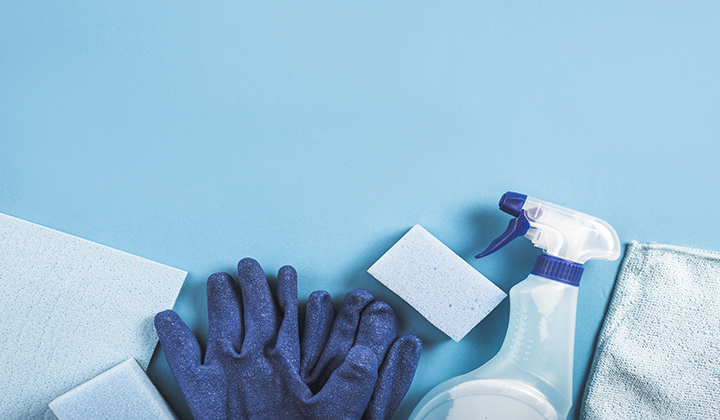
Hygiene in Terms of Occupational Health and Safety
Hygiene in Terms of Occupational Health and Safety
Most work accidents and occupational diseases are predictable and preventable events. Hygiene in the workplace The subject forms the basis of workplace health and safety. Hygiene; It is all of the activities and precautions taken for a healthy life. The origin of the term is French "hygiène". is the word.
When you look at the mythological history of the word hygiene, you come across Hygieia, the daughter of Asklepios, the god of medicine. In addition to the healing task of the god of medicine, his daughter Hygieia also took over the duty of protection. This name, which comes from Greek and Roman mythology, is used today as hygiene.
From a medical perspective, the word hygiene covers the subjects of health science, health services and preventive medicine. When viewed as a word, we can define the word hygiene as all of the practices carried out or all of the cleaning measures taken in order to prevent factors that will harm our health.
From a social perspective, hygiene education begins within the family. It occurs throughout human life.
Our hands are the most polluted part of our body.
The basic rule of hygiene is washing hands. Many scientific studies have shown us that simply washing hands prevents many diseases. The most important, easiest and cheapest way to protect one's own health, as well as the health of others, is through cleaning. It is very important not only to clean the body, but also to keep everything and every environment we use in our lives clean.
We can transmit various microbes and parasite eggs (such as pinworms, worms) that we pick up from the environment with our hands into our mouth, our food, or the areas of the skin where germs can enter.
That's why our hands; We must wash with soap and water after going to the toilet, before eating, and after contact with animal and human feces. We should also cut our nails regularly.
The most important part of personal hygiene is; washing our hands with soap for a sufficient amount of time before eating anything, after using the toilet and after completing your work.
Sterilization:Sterilization is the process of purifying the environment from all bacteria, viruses, spores, in short, all living microorganisms. Sterilization process can generally be done by physical and chemical methods. While physical methods basically create heat and humidity, the chemical sterilization method is carried out with chemicals and gases.
Disinfection: Disinfection can be defined as killing or stopping the reproduction of pathogenic microorganisms, that is, microorganisms that can cause disease, by physical or chemical methods. In the static disinfection process, bacteria in the environment do not die, only their reproduction is stopped.
Antiseptic: Antiseptics are substances used to kill microorganisms or stop their reproduction.
Basic Features of Industrial Hygiene Factors
- They are found in workplaces
- They can cause permanent or temporary damage
- They may directly or indirectly cause work accidents
- They can directly or indirectly cause occupational diseases
- They can be measured
- They can be prevented
Industrial Hygiene Factors:
A - Physical Hygiene Factors
Physical Hygiene Factors are among the occupational hygiene factors found in the workplace environment; Electromagnetic field, Noise, Vibration, Lighting, Thermal comfort, Ionized rays, Non-ionized rays, Thermal Radiation, High and Low pressure. It consists of elements such as.
B - Chemical Hygiene Factors
Dust, Gas, Vapor and Fumes; It consists of Solvents, Acids and Bases and Pesticides.
1- Powders
Herbal Powders
Animal Powders
Metal Powders
Mineral Powders
Synthetic Component Powders
2- Gas-Steam and Fumes
Asphyxiating gases, vapors and fumes
Simple Asphyxiating Gas and Fumes
Chemical Asphyxiating Gas and Fumes
Irritating gases, vapors and fumes
Systematic poisons
Narcotic gas, vapor and fumes
3- Solvents
Primet aphrodisiacs
Allergenic irritants
Narthotic effects
Neurotoxic effects
4- Acids and Bases
Acids are substances that contain hydrogen in their structure and give hydrogen iodine to their solution in water. Bases are substances that contain hydroxyl in their structure and release hydroxyl ions in water solution.
5- Pesticides
Insecticides
Herbicides
Rodenticides
C - Biological Factors (fungi, bacteria, viruses)
What to Do for Proper Personal and Workplace Hygiene:
- Do not keep food and beverages in our workplaces, laboratories, locker rooms and toilets.
- It is the responsibility of each employee to use the sinks, showers, toilets and locker rooms in the workplace in the best possible way. Use clean, leave clean.
- Toilets, sinks, showers, etc. It should be cleaned regularly. Keeping them clean, of course, requires the cooperation, attention and careful use of all employees.
- Wash your hands regularly. If you are exposed to chemicals, repeat this process with recommended chemical solvents.
- Choose clothes suitable for your job and (if necessary) work safety shoes.
- Do not mix your daily clothes and workplace clothes.
- Wash your clothes contaminated with chemicals separately from your other laundry.
- While working, use protective masks, goggles, gloves and ear protectors constantly and appropriately. Do not use each other's personal protective equipment.
- Eat properly, exercise periodically.
- Infectious diseases can spread quickly from one worker to another. Those who have flu, severe (acute) intestinal complaints, or have an infectious disease should immediately report the situation to the workplace physician.
- Make sure to wash your hands before and after starting work, after finishing work, and before and after using the toilet.
- Never use substances such as solvents, thinners, alkalis or machine oils to clean your skin and hands.
- Those who work with hazardous dust should take a shower and wash their hair after work. Wash your hands and the parts of your body exposed to chemicals regularly and take daily showers.
- Clean your teeth and mouth every day and have your teeth checked (periodically) by a dentist.
&Universal OSGB
Üniversal OSGB
Occupational Safety and Worker Health Center


